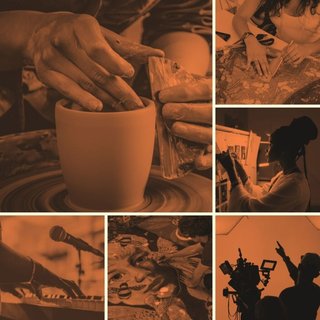Customized Arts and Culture Marketing

Within the rapidly evolving digital landscape, customized marketing is becoming essential for arts and culture organizations. By tailoring marketing strategies to specific audiences, these organizations can effectively engage with diverse communities, foster deeper connections, and drive participation and support. Here’s an in-depth take a look at how Tailored marketing for Arts and Culture can improve the reach and impact of arts and culture initiatives.
1. Understanding Your Audience
The building blocks of customized marketing is based on understanding the unique characteristics, preferences, and behaviors of one's target audience.

Key Strategies:
Audience Segmentation: Divide your audience into distinct groups depending on demographics, interests, and behavior. This permits for more targeted and relevant messaging.
Persona Development: Create detailed personas representing your key audience segments. Include information about their motivations, challenges, and preferred communication channels.
Data Analysis: Utilize analytics tools to gather insights into audience behavior and preferences. This data can educate marketing strategies and help refine your approach over time.
2. Personalized Content
Delivering personalized content can significantly enhance audience engagement and loyalty. Tailored content resonates more deeply and can create a more meaningful experience of your audience.
Key Strategies:
Marketing with email: Use audience data to deliver personalized emails with content strongly related each recipient’s interests. This may include event recommendations, special offers, and personalized greetings.
Dynamic Website Content: Implement dynamic content on your website that changes based on user behavior and preferences. As an example, showcase different exhibitions or events in line with the user’s browsing history.
Customized Social Media Campaigns: Tailor your social media posts to different audience segments. Use targeted ads to reach specific groups with content that appeals straight to their interests.
3. Interactive and Immersive Experiences
Creating interactive and immersive experiences can captivate your audience and encourage active participation. These experiences could be both online and offline, providing multiple touchpoints for engagement.
Key Strategies:
Virtual and Augmented Reality: Develop VR and AR experiences that enable users to understand more about art and culture in new and engaging ways. For example, virtual tours of museums or AR-enhanced exhibitions.
Interactive Workshops and Webinars: Offer online workshops and webinars that permit participants to have interaction with experts and fellow enthusiasts. Tailor these events to several audience segments, for example families, students, or art professionals.
Gamification: Incorporate gamification elements into your marketing campaigns, for example quizzes, challenges, and rewards. This could make learning about art and culture fun and interesting.
4. Community Building
Creating a sense of community around your arts and culture organization can foster loyalty and long-term support. Encourage your audience being active participants and advocates.
Key Strategies:
Social Media Groups: Create dedicated social media marketing groups for various audience segments. These groups can serve as platforms for discussion, sharing, and community-building.
User-Generated Content: Encourage your audience to produce and share content associated with your organization. This could include reviews, photos, videos, and personal stories.
Exclusive Access and Events: Offer exclusive use of events, behind-the-scenes tours, and special content for loyal supporters. This can create a a feeling of belonging and appreciation.
5. Collaborative Partnerships
Partnering along with other organizations and influencers will help you reach new audiences and increase your marketing efforts.
Key Strategies:
Cross-Promotions: Collaborate along with other arts and culture organizations for cross-promotional campaigns. This can help you reach a wider audience and provide added value for your supporters.
Influencer Partnerships: Use influencers and bloggers who align together with your organization’s values and audience. They could help promote your events and initiatives to their followers.
Corporate Sponsorships: Partner with businesses and brands that share your dedication to arts and culture. Sponsorships can provide financial support and increase your visibility.
6. Measuring Success
Regularly evaluating the strength of your customized marketing efforts is vital for continuous improvement. Use metrics and feedback to refine your strategies and have better results.
Key Strategies:
Performance Metrics: Track key performance indicators (KPIs) such as engagement rates, conversions, and audience growth. Analyze this data to spot trends and areas for improvement.
Surveys and Feedback: Gather feedback from your audience through surveys, interviews, and social media marketing. Use this feedback to know their needs and preferences better.
A/B Testing: Conduct A/B tests on several marketing ways of determine what works the best for your audience. This enables you to optimize your campaigns for max impact.
Conclusion
Customized marketing for arts and culture organizations is about creating meaningful and relevant experiences for diverse audiences. By understanding your audience, delivering personalized content, creating interactive experiences, building communities, forming strategic partnerships, and continuously measuring success, it is possible to effectively engage and encourage your audience. Since the digital landscape will continue to evolve, these tailored strategies will probably be essential in promoting and preserving arts and culture in an ever-changing world.
